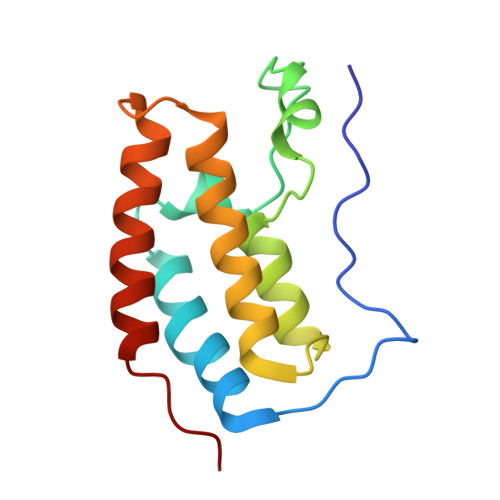Biased multicomponent reactions to develop novel bromodomain inhibitors.
McKeown, M.R., Shaw, D.L., Fu, H., Liu, S., Xu, X., Marineau, J.J., Huang, Y., Zhang, X., Buckley, D.L., Kadam, A., Zhang, Z., Blacklow, S.C., Qi, J., Zhang, W., Bradner, J.E.(2014) J Med Chem 57: 9019-9027
- PubMed: 25314271
- DOI: https://doi.org/10.1021/jm501120z
- Primary Citation of Related Structures:
4WIV - PubMed Abstract:
BET bromodomain inhibition has contributed new insights into gene regulation and emerged as a promising therapeutic strategy in cancer. Structural analogy of early methyl-triazolo BET inhibitors has prompted a need for structurally dissimilar ligands as probes of bromodomain function. Using fluorous-tagged multicomponent reactions, we developed a focused chemical library of bromodomain inhibitors around a 3,5-dimethylisoxazole biasing element with micromolar biochemical IC50. Iterative synthesis and biochemical assessment allowed optimization of novel BET bromodomain inhibitors based on an imidazo[1,2-a]pyrazine scaffold. Lead compound 32 (UMB-32) binds BRD4 with a Kd of 550 nM and 724 nM cellular potency in BRD4-dependent lines. Additionally, compound 32 shows potency against TAF1, a bromodomain-containing transcription factor previously unapproached by discovery chemistry. Compound 32 was cocrystallized with BRD4, yielding a 1.56 Å resolution crystal structure. This research showcases new applications of fluorous and multicomponent chemical synthesis for the development of novel epigenetic inhibitors.
Organizational Affiliation:
Department of Medical Oncology, Dana-Farber Cancer Institute , 450 Brookline Avenue, Boston, Massachusetts 02215, United States.

















